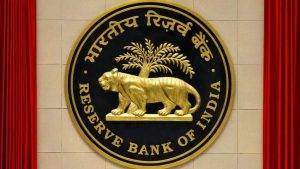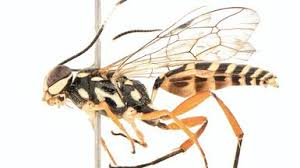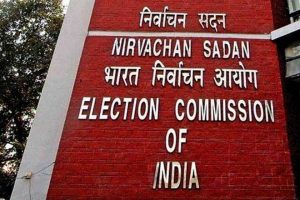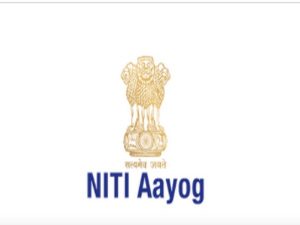Today’s Current Affairs: 7th June 2025 for UPSC IAS exams, State PSC exams, SSC CGL, State SSC, RRB, Railways, Banking Exam & IBPS, etc
Table of Contents
Loan-to-Value (LTV) Ratio:

Providing relief to small borrowers, the Reserve Bank of India (RBI) recently increased the loan-to-value (LTV) ratio for gold-backed loans up to ₹5 lakh.
Recent RBI Changes to Loan-to-Value (LTV) Ratio for Gold-Backed Loans:
- RBI has increased the LTV ratio from 75% to 85% for gold loans of up to Rs 2.5 lakh per borrower, including interest.
- For gold loans more than Rs 2.5 lakh and up to Rs 5 lakh, the LTV ratio has been set at 80 percent.
- For loans more than Rs 5 lakh, the central bank has set an LTV of 75 percent.
- LTV Ratio represents the proportion of an asset’s value that a lender is willing to provide debt financing against, usually expressed as a percentage.
- LTV is calculated by dividing the loan amount by the property’s appraised value or purchase price, whichever is lower.
- LTV Ratio = (Loan Amount/Appraised Property Value) x 100
- LTVs tend to be higher for assets that are considered more “desirable” as collateral.
- The desirability of an asset as collateral is generally measured by how stable its value is, how active its secondary market is, and how easily the title can be transferred to other parties (among other things).
- Typically, loan assessments with high LTV ratios are considered higher-risk loans. Therefore, if the loan is approved, it has a higher interest rate.
Losgna Occidentalis: Rediscovery

A recent study published in Zootaxa, a peer-reviewed scientific journal for animal taxonomists, pointed out the rediscovery of the Losgna genus in India, after close to six decades.
- Losgna Occidentalis was discovered from an urban dry scrub forest.
- It belongs to a parasitic wasp (family Ichneumonidae), a group known for laying eggs inside or on other arthropod hosts.
- Prior to this discovery, Losgna had not been recorded in India since Heinrich’s 1965 monograph. No records, specimens or published literature on Losgna existed in any Indian institution after 1965.
- It appeared that the genus had vanished entirely from its once‐documented range in northeast India
- Researched named the new species ‘Losgna occidentalis’ because it represents the westernmost known occurrence of the genus: prior records came exclusively from tropical forests of eastern India and adjacent regions of Southeast Asia.
- At present only existing specimens of any Losgna species are those preserved at the Natural History Museum, London.
Index Cards:

The Election Commission of India has streamlined, technology-driven system to generate Index Cards and various statistical reports after the conduct of the elections.
- Index Cards is a non-statutory, post-election Statistical Reporting Format.
- It is developed as a suo moto initiative by the Election Commission of India (ECI) to promote accessibility of election-related data at the constituency level for all stakeholders, including researchers, academia, policymakers, journalists, and the general public.
- It is designed to disseminate data across multiple dimensions—such as candidates, electors, votes polled, votes counted, party-wise and candidate-wise vote share, gender-based voting patterns, regional variations, and performance of political parties
- The Index Card forms the foundation for generating about 35 Statistical Reports for Lok Sabha elections and 14 for State Assembly elections.
- These reports cover variables like State/PC/AC-wise elector details, number of polling stations, state and constituency-wise voter turnout, participation of women electors, performance of national/state parties and Registered Unrecognized Political Parties (RUPPs).
- Earlier, this information was manually filled at the Constituency level using various statutory formats in Physical Index Cards.
- These physical Index Cards were subsequently used for data entry into the online system to facilitate the generation of statistical reports.
- This manual, multi-layered process was time-consuming and frequently led to delays in data availability and dissemination.
Indian Council of Arbitration:

The Indian Council of Arbitration (ICA) organized the 3rd edition of its International Conference on “Arbitrating Indo-UK Commercial Disputes” during the London International Disputes Week (LIDW) 2025.
- Indian Council of Arbitration is one of the oldest arbitral institutions in India.
- It was established in 1965 as a specialized arbitral body at the national level under the initiatives of the Government of India and apex business organizations FICCI.
- It is a registered society under the Societies Registration Act, 1860, operating on a not-for-profit basis.
- The main objective of ICA is to promote amicable, quick and inexpensive settlement of commercial disputes by means of arbitration, conciliation, regardless of location.
- The core function of ICA is the cost effective and efficient administration of arbitration proceedings.
- The ICA has its own set of procedural rules which govern the conduct of the entire arbitration proceedings, from its commencement to its termination.
- ICA is tasked with the mission of promoting and building capacity in the area of ADR (Alternative Dispute Resolution).
- It acts as a specialized arbitral body at the national level under the initiatives of the Govt. of India and apex business organizations like FICCI etc.
- Head office: New Delhi.
Fusarium graminearum : Dangerous crop-killing fungus

The recent arrest of a Chinese researcher and charges against another for smuggling a dangerous crop-killing fungus Fusarium graminearum into the United States have brought renewed attention to the threat of agro-terrorism.
- It is a fungus that affects the kernel development of various grains, thereby reducing the yield.
- It can also cause ear rot or stalk rot in maize crops. Once infected, the fungus continues to spread as the crop matures.
- It is known to survive in plant tissue residues like small grain stems and roots and infect new plants.
- It causes Fusarium head blight—a disease that ravages cereal crops such as wheat, barley, maize, and rice.
- The fungus not only decimates yields but also produces a toxin called vomitoxin (deoxynivalenol), making the grain unsafe for human and animal consumption.
- According to the US Department of Agriculture, this disease causes over $1 billion in crop losses annually in the United States alone.
- Vomitoxin can cause vomiting, diarrhea, abdominal pain, and fever in livestock and people, further amplifying its public health impact.
10th meeting of the Niti Aayog Governing Council:

The 10th meeting of the Niti Aayog Governing Council was held under the theme-Viksit Rajya for Viksit Bharat@2047. The meeting underscored the significance of fostering cooperative federalism to achieve national development objectives.
10th Meeting of NITI Aayog Governing Council Highlights:
- Tamil Nadu sought a 50% share in central taxes (vs. current 33%) and a Clean Cauvery Mission.
- Punjab demanded fair Yamuna water rights and financial aid for border security & drug control.
- States were asked to reduce policy bottlenecks, repeal obsolete laws, and create investor-friendly environments.
- NITI Aayog was directed to prepare an ‘Investment-friendly Charter’ to attract global investments.
- PM emphasized the need for long-term security preparedness and modernized civil defense mechanisms.
- Operation Sindoor (targeting terror infrastructure in Pakistan) received unanimous support from attending states/UTs.
- Chhattisgarh CM presented a 3T model (Technology, Transparency, Transformation) to double its GSDP in 5 years and 10 times per capita income.
- Andhra Pradesh suggested sub-groups on GDP growth, population management, and AI-driven governance.
- PM pushed for global-standard tourist spots (one per state) and green energy/hydrogen investments.
- Focus on urban planning in Tier 2/3 cities, skilling youth in cybersecurity, and boosting women’s workforce participation.
Amit Shah Launches Bharatiya Bhasha Anubhag:
Union Home Minister Amit Shah inaugurated the Bharatiya Bhasha Anubhag (BBA), or Indian Languages Section, in New Delhi. This initiative is aimed at reducing the dominance of foreign languages, especially English, in India’s administrative functioning and promoting the use of mother tongues in decision-making and official communication. The move aligns with the vision of linguistic inclusion and is a key step towards fostering unity through India’s linguistic diversity.The Indian Languages Section (BBA) was launched on June 6, 2025, by Union Home Minister Amit Shah. The initiative aims to empower regional languages and promote decision-making in mother tongues, moving away from the traditional dominance of English in governance. The Union Budget 2024-25 allocated ₹56 crore for the development of this platform
Muhammad Waseem and Chloe Tryon Named ICC Players of the Month for May 2025:
The International Cricket Council (ICC) has honoured Muhammad Waseem of the United Arab Emirates (UAE) and Chloe Tryon of South Africa as the ICC Men’s and Women’s Players of the Month for May 2025. Waseem, a dynamic top-order batter and captain, delivered standout performances in both ODIs and T20Is, while Tryon impressed as an all-rounder during South Africa’s tour of Sri Lanka. The award recognises their consistency, match-winning efforts, and growing impact on international cricket.The ICC Player of the Month Awards for May 2025 were recently announced, recognising players who delivered exceptional individual performances in international cricket. Muhammad Waseem was instrumental in UAE’s historic T20I series win against Bangladesh. Chloe Tryon stood out in the Sri Lanka ODI Tri-Series, securing her first monthly ICC award.
World Oceans Day 2025:
Every year on June 8, the world observes World Oceans Day, a United Nations-recognized event dedicated to celebrating and protecting the Earth’s oceans. In 2025, the event adopts the evocative theme, “Wonder: Sustaining what sustains us,” highlighting the emotional, scientific, and ecological value of the oceans. This year’s global observance is especially significant as it precedes the UN Ocean Conference 2025, scheduled to take place from June 9 to 13 in Nice, France. The focus is on promoting curiosity, scientific exploration, and global cooperation to preserve marine ecosystems amid the escalating climate crisis and record sea temperatures.
800-Year-Old Pandya Era Shiva Temple Unearthed in Tamil Nadu:
An important archaeological discovery has been made in Udampatti village of Melur taluk, Tamil Nadu, where the foundation of an 800-year-old Shiva temple belonging to the later Pandya period has been unearthed. Although only the stone base remains, the site is of major historical interest due to Tamil inscriptions dating back to 1217-1218 CE that reveal the temple’s name—Thennavanisvaram—and its financially independent status. This find sheds light on the cultural, architectural, and socio-economic dynamics of the Pandya era.The recent unearthing of a Pandya-era Shiva temple at Udampatti in Melur taluk, with inscriptions from the reign of Maravarman Sundara Pandya, offers significant insights into ancient temple administration and land transactions. The discovery also reveals that the current village was once known as Attur, providing critical historical and linguistic data for researchers.




